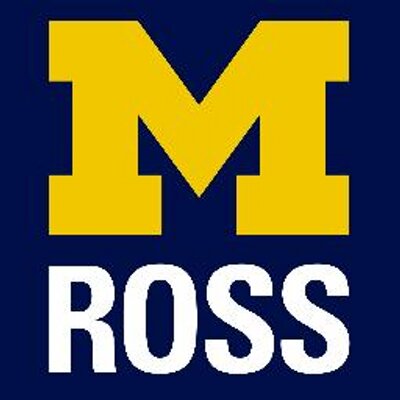- Managing people
Diversity with a Difference
Michigan University’s Debotri Dhar argues for a nuanced framing of diversity in organizations to promote, not only social justice, but also innovation, conflict management, and talent retention
The Innovation Code classifies worldviews into four types: artists, athletes, engineers, and sages.
While the high risk-taking artist’s core competencies are imagination and rejection of convention, allowing them to formulate big-picture vision, the engineer seeks efficiency through bureaucratic systems and streamlined processes. Meanwhile, the athlete’s attributes are courage, speed, and a focus on practical outcomes, even as the sage emphasizes shared values, empathy, and slow community-building.
Jeff, a professor at the Ross School of Business at the University of Michigan and an advisor to Fortune 500 companies, and Staney, the CEO of a consulting firm on talent retention and economic growth, build on the work of Robert Quinn and Kim Cameron to present compelling evidence on how these contrasting worldviews together allow workplaces to be more innovative. As an example, pairing an artist with an engineer, who are on opposite ends of the innovation spectrum, allows for the playing out of clashes with the potential for breakthrough innovation while also creating reliable processes.
These contrasting worldviews together allow workplaces to be more innovative
After graduating with Honors in Economics, during which time I developed an interest in the challenges faced by women in the workplace, in society, and across sectors, I pursued my Masters and Ph.D in Women’s and Gender Studies (WGS). For over a decade, I have taught, researched, and written extensively on gender issues across disciplines and genres.
The above B-School model by the Degraffs, based on the diversity of thought, presents interesting gaps and overlaps with a dimension of diversity popular in WGS and allied fields: that of diversity of identity and/or experience. The concept of ‘intersectionality’—how gender intersects with other categories such as race, economic background, age, disability, citizenship status, religion, sexual orientation, etc.—is central to discussions of diversity in WGS. The term was coined by black civil rights advocate Kimberlé Crenshaw to describe the additional challenges faced by poor and immigrant women of color who navigate the justice system as survivors of gender violence.
The framework of intersectionality is also relevant for my research on sexual violence in South Asia, which found that the poorest and most marginalized women faced a host of barriers pertaining to basic legal literacy, limited financial resources, and lack of access to medical care, compounding the devastating consequences of sexual violence for all survivors.
Yet, as my forthcoming book (Routledge: London, New York, New Delhi) demonstrates, the agency exercised by women even with the same identity markers often took diverse forms, including and up to suicide, such that it was impossible to reduce their agency only to identity. What holds true for this ‘extreme’ example also applies in other contexts: two individuals, even within the same family, can approach similar situations differently based on individual psychology, temperament, resilience etc.
These various dimensions of diversity together offer important insights for workplaces. For example, athletes with their focus on speed and delivering tangible results, and creative, risk-taking artists—whose passion for their craft cannot be entirely reduced to identity/politics—even as their collective identities may limit or enable their individual behavioral traits, are both critical to the success of institutions facing environmental, economic, or other internal and external crises and in need of innovation.
The COVID pandemic is just one example of external, unanticipated pressure on workplaces to innovate. Any innate traits notwithstanding, many aspects of individual cognition and social behavior can also be taught; this underscores the need for in-house and b-school executive education programs. Both public and private sector organizations that implement professional development programs—e.g. on women’s leadership—become workplaces of choice. These programs can teach employees how to reflect on and leverage their own individual limitations and strengths. CEO Sheryl Sandberg’s book Lean In, with its advice to women on goal-setting, time management, risk taking, negotiation and other workplace skills is an example of this approach.
Any innate traits notwithstanding, many aspects of individual cognition and social behavior can also be taught
At the same time, just as team members with diverse disciplinary backgrounds are assets to organizational decision-making, in that each can address problems from their own vantage point to develop comprehensive and innovative solutions as a team, the inclusion of multidisciplinary expertise in education and training programs allows workplaces to also remain attentive to other aspects, such as structural factors that lie beyond individual choice.
For example, as a part of gender sensitivity training for systemic change, mentorship (rather than only sponsorship) programs led by women executives can be highly effective, drawing from their own identities and diverse experiences of gender biases at home and at work to formulate short and long-term solutions. Universities and other workplaces have also recognized the impact of targeted interventions for first generation and other learners, such as poorer women with few available forms of economic support, immigrants facing significant legal barriers, or with care-giving responsibilities, etc.
Team members with diverse disciplinary backgrounds are assets to organizational decision-making
Understanding these dimensions of diversity can also help resolve conflict. At one public institution, a sage-engineer boss emphasized shared values within the community and moved to isolate two talented, experienced employees (both women of color) who were challenging unit practices. While this had a chastising effect on one, a sage who had spent decades building community, it had the opposite effect on the second, an artist-athlete who thrived on challenge and found creative growth elsewhere. A negative impact on team spirit aside, another unfortunate consequence was that their innovative ideas remained underutilized by a workplace which could have benefited from them.
At the same institution, another unit head with substantial team-building experience was able to bring together employees representing a spectrum of identities, highlighting each team member’s unique experiences along with relevant multi-disciplinary expertise, thus facilitating pathways for individual growth that also contributed to unit success.
Hence interdisciplinarity and a nuanced framing of diversity, when applied in practice, not only promote social justice but also aid in innovation, conflict management, and talent retention. In rapidly changing times, workplaces that ignore these insights may be doing so at their own peril.
Corporate cliches are for yesterday’s business. Today's business calls for a new kind of leadership, one that sees beyond yesterday’s cliches and creates meaningful change, the kind of change that yields long-term, sustainable results.
ARTICLES YOU MIGHT LIKE
BOOK REVIEW
UCL’s Colin Fisher explains how to understand the invisible forces of group dynamics to build and lead high-performing teams
DEVELOPING LEADERS QUARTERLY MAGAZINE AND WEEKLY BRIEFING EMAILS


































